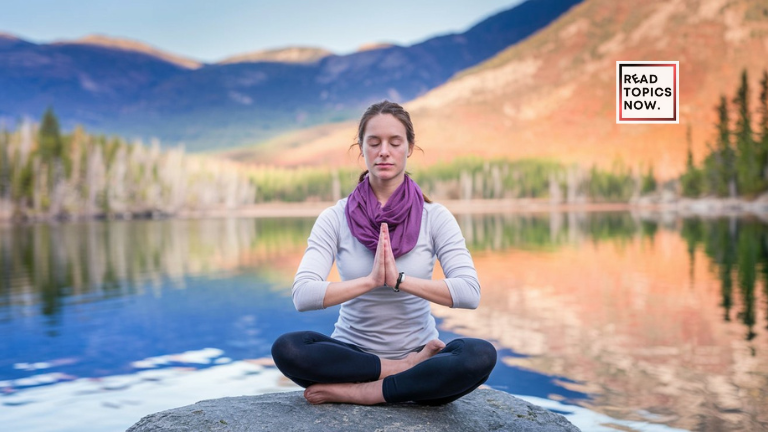
5 Effective Exercises for Reducing Anxiety and Depression

Best Exercises for Mental Health
Anxiety and depression are among the most prevalent mental health challenges today. While medications and therapy are effective tools in managing these conditions, exercise has emerged as a powerful and natural method to combat both anxiety and depression. Exercise not only benefits your physical well-being but also enhances your mental health. In this guide, we explore the best exercises to reduce anxiety and depression, backed by research and professional recommendations.
How Exercise Impacts Anxiety and Depression
The connection between mental health and physical activity is rooted in science. Engaging in regular exercise triggers the release of endorphins—natural chemicals in the brain that improve mood and provide feelings of happiness and relaxation. Moreover, exercise reduces the levels of the body’s stress hormones, such as adrenaline and cortisol, promoting a more balanced mental state. Consistent exercise has also been shown to improve self-esteem, increase energy levels, and provide better sleep—all of which contribute to reduced anxiety and depressive symptoms.
Mermaid Diagram: How Exercise Reduces Anxiety and Depression
Best Exercises for Managing Anxiety and Depression
1. Aerobic Exercise
Aerobic exercises, also known as cardio, are highly effective in reducing anxiety and depression. These exercises increase heart rate and breathing, which helps to boost serotonin levels in the brain, often leading to enhanced mood and stress relief.
Running: Running is one of the simplest yet most impactful forms of aerobic exercise. A consistent running routine can significantly improve mood, reduce anxiety, and alleviate depression. It allows for the release of pent-up energy, fosters mindfulness, and provides a sense of accomplishment.
Swimming: Swimming engages the entire body, combining the physical benefits of aerobic exercise with the calming nature of being in water. Studies have shown that the rhythmic movement and breathing involved in swimming can reduce anxiety and depression symptoms.
Cycling: Whether stationary or on the road, cycling is an excellent option for individuals looking to alleviate anxiety and depression. It provides a steady cardiovascular workout and offers the mental benefits of outdoor activity when done outside.
2. Strength Training
While strength training is commonly associated with building muscle, it also provides significant mental health benefits. It can enhance self-esteem and create a sense of mastery, which is particularly helpful for those struggling with anxiety and depression.
Weightlifting: Regular weightlifting sessions have been shown to reduce symptoms of depression. The process of setting, achieving, and surpassing weightlifting goals fosters a sense of accomplishment and control, helping individuals feel more confident and grounded.
Bodyweight Exercises: Exercises like push-ups, squats, and lunges can be performed anywhere and require no equipment. The accessibility of these exercises makes them a great option for managing mental health, especially for those who may feel overwhelmed by going to the gym.
3. Yoga
Yoga combines physical postures, breathing exercises, and meditation, making it a holistic approach to mental health. Regular yoga practice has been linked to lower cortisol levels, improved emotional regulation, and increased mindfulness—all of which are key to managing anxiety and depression.
Hatha Yoga: This is a gentle form of yoga that focuses on slow and deliberate movements, making it ideal for those new to yoga or those seeking relaxation. Hatha yoga’s emphasis on breathing techniques can directly combat anxiety symptoms.
Vinyasa Yoga: For those who prefer a more dynamic practice, Vinyasa yoga incorporates fluid movements with breath synchronization. It’s a great way to release built-up tension in the body and mind, offering both a physical and mental challenge.
4. Mindful Walking
Mindful walking encourages individuals to focus on the present moment, combining physical movement with mindfulness meditation. This practice helps to lower stress levels, reduce anxious thoughts, and foster a sense of peace and calm.
Forest Bathing (Shinrin-Yoku): A Japanese practice of walking mindfully in nature, forest bathing has gained global popularity for its mental health benefits. Immersing oneself in a natural environment can reduce anxiety and depressive symptoms, while also improving overall mental clarity and emotional well-being.
Urban Walking: For those in urban areas, walking through parks or green spaces offers an accessible form of mindful walking. Even brief walks in nature or tree-lined streets can provide mental health benefits.
5. Dancing
Dancing is a fun and effective way to lift your mood and combat feelings of anxiety and depression. The combination of music, movement, and social interaction can create a euphoric experience that reduces negative emotions.
Freestyle Dancing: Allowing yourself to move freely to your favorite music can have immediate mood-lifting effects. Dancing to upbeat tunes releases dopamine, helping you feel more energized and positive.
Dance Classes: Joining a dance class adds the benefit of social interaction, which can be particularly beneficial for those struggling with isolation due to depression. Whether it’s salsa, hip hop, or ballet, dancing with others fosters a sense of community and belonging.
Incorporating Exercise into Daily Life
While regular exercise can profoundly impact mental health, consistency is key. Start by setting small, achievable goals and gradually increase the intensity and duration of your workouts. If you’re new to exercise or managing severe symptoms, consider consulting with a healthcare professional before starting a new fitness routine.
It’s also important to find an exercise that you enjoy. When exercise feels like a chore, it becomes harder to maintain consistency. Explore different activities, whether it’s walking, dancing, or strength training, until you find the one that brings you joy and peace of mind.
Tips for Success
- Set realistic goals: Start with small, attainable objectives, such as walking for 15 minutes a day.
- Combine physical and mental exercises: Try activities that incorporate mindfulness, such as yoga or mindful walking.
- Create a routine: Establish a regular exercise schedule to stay consistent and reap the long-term benefits.
- Incorporate variety: Mix up your workouts to keep them enjoyable and to target different aspects of mental and physical health.
Conclusion
Incorporating regular physical activity into your daily life is one of the most powerful, natural ways to manage anxiety and depression. From aerobic exercises like running and swimming to mindful practices like yoga and walking, each type of exercise offers unique benefits. By making exercise a consistent part of your routine, you can experience lasting improvements in both mental and physical health.
Engaging in anxiety relief exercises and depression management strategies can significantly improve your mental well-being. Mental health fitness is just as important as physical fitness, and incorporating stress reduction techniques into your daily routine can have a profound impact. Exercise for anxiety, such as yoga, walking, or cycling, can help alleviate symptoms, while natural depression remedies like mindfulness and movement can promote relaxation.
Mood-boosting workouts and relaxation exercises can also help regulate emotions. By incorporating holistic mental health practices into your lifestyle, you can find lasting relief from anxiety and depression. Discover the best exercises for anxiety and depression, explore natural ways to reduce stress and anxiety, and create fitness routines for mental health that work for you. With yoga for anxiety relief and exercise and mindfulness for depression, you can take the first step towards a healthier, happier you.
Get Curated Post Updates!
Sign up for my newsletter to see new photos, tips, and blog posts.






